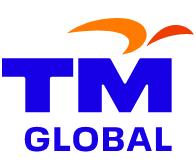Check out the challenges and opportunities for Industry Players embracing 5G.
Few technologies can rival 5G’s ability to transform the experience of Malaysian consumers, and the products and services offered by Malaysian businesses and governments. It’s why Internet consumers of all stripes are looking forward to using 5G.
For internet service providers (ISPs), mobile virtual network operators (MVNOs) that leverage the promise of fixed wireless access (FWA), and Over the Top (OTT) companies, 5G creates unrivalled opportunities to expand market share and revenues, generate profits, create innovative and differentiated products, and boost customer experience.
But are service providers ready to grab this opportunity and address the hunger for 5G from users?
Capitalising on 5G requires access to the right set of backhaul solutions from reputed mobile network enablers (MNEs)—allowing ISP and OTT businesses to maximise the possibilities 5G presents.
Here's how they can do that.
Malaysia: A Nation Hungry for Internet Services and Media
Malaysians are already among the most prolific users of the Internet. Data from We Are Social and Hootsuite shows that Malaysia ranks sixth on the list of countries that spend the most time on the Internet, at nine hours and four minutes a day.
The pandemic magnified that trend. More Malaysians spent more time on the Web, consuming a higher number of services including ecommerce, social media, online delivery, streaming media, telemedicine, and products from edtech and fintech companies.
This is leading to the expansion of Malaysia’s digital economy. The Malaysian e-commerce market is predicted to grow at a compound annual growth rate of 16% between 2022 and 2026, hitting MYR69 billion in 2026, according to GlobalData research.
“Malaysia is among the fastest-growing ecommerce markets in Southeast Asia,” says Ravi Sharma, Lead Banking and Payments Analyst at GlobalData.
The demand for OTT services, too—including media, gaming and VOIP, among others—is set to rise considerably. Malaysians consume more media than other countries in Southeast Asia, reveals data from Google, Temasek and Bain & Company.
According to GlobalData, “the household penetration of subscription video on demand (SVoD) services in Malaysia is expected to increase from 17% in 2021 to 38% in 2026.”
Putting the above together—and combined with organisations taking forward digital transformation agendas, remote work initiatives, and the rapidly increasing use of cloud services such as those that power big data analytics, artificial intelligence, IoT, and Industry 4.0 projects, among others—Malaysia’s digital economy is likely to touch $34 billion in 2025, reveals Bain analysis.
The demand for Internet-based services and media will be spurred by the expansion of 5G, with its ability to offer faster speeds, lower latency, greater density, and newer business models thanks to network slicing capabilities. By 2025, Malaysia is projected to have 15 million 5G subscribers, according to research agency Twimbit, and about 40 million by 2030.
This represents a once-in-a-decade opportunity for ISPs and MVNOs that can leverage FWA—both of whom play a key role in creating access to 5G connectivity and associated services. Malaysian’s MVNO market size is expected to reach $2 billion by 2027, growing at a compound annual growth rate of 9% according to 360iResearch. And Ericsson Mobility Report: Malaysia Edition reports that FWA connections are forecast to grow to around 230 million by 2027, almost half of which are expected to be carried over 5G networks.
“Fixed Wireless Access is an efficient and scalable complement to fibre and cable that can help bridge the digital divide in Malaysia as it can be used to economically deliver 5G to homes and small and medium-sized enterprises,” says David Hägerbro, Head of Ericsson Malaysia, Sri Lanka & Bangladesh.
5G will also propel the use of OTT services in Malaysia. Revenue from just the video segment will touch $606 million by 2027, growing annually at 10% between 2022 and 2027. The number of OTT video consumers in Malaysia will also rise to 25 million by 2027, with a user penetration level of 71%, compared to 61% today.
The Challenge Facing Service Providers and OTT Companies
ISPs, MVNOs, and OTT companies want to seize the most value from 5G. In the way, however, are significant hurdles that impede them from moving quickly, while simultaneously maintaining low cost-structures which could create a drag on their profitability.
Access to Cost-Effective Backhaul: MVNOs, for example, want to capture new niche markets swiftly by offering innovative services—leveraging augmented reality and virtual reality (AR/VR) or IoT, for example—and data products at competitive price points. But they need easy, low-cost access to backhaul infrastructure—including fibre connectivity and edge computing services—which they can scale quickly, cost-effectively and compliantly.
This can be extremely challenging without the help of MNEs.
Expensive and Complex Fixed Line Expansion: Service operators also need competent MNEs—equipped with fronthaul and mid-haul solutions and multi-access edge compute offerings—to leverage FWA capabilities that can help them break free from the financial and operational challenges of setting up fixed line services to urban and suburban areas. By choosing wireless connectivity over expensive fibre, network operators can open up new markets quickly and inexpensively and offer ultra high-speed broadband to homes and businesses, thereby bridging Malaysia’s digital divide.
Time and Cost to Set up Edge Environments: OTT businesses require easy-to-consume multi-access edge compute capabilities, too. They want to improve customer experience by lowering latency and offering consumers innovative services—such as real-time recommendations—which require compute-and-storage-intensive capacity residing at the edge, as close to users as possible. Setting up this distributed infrastructure is prohibitively expensive and time-consuming.
TM Global: The Power Behind Malaysia’s 5G Throne
TM Global provides a suite of solutions that can help to iron out these challenges, allowing service providers and OTT businesses to focus on making the most of the 5G opportunity. It’s offerings include and go beyond the services offered by leading MNEs in Malaysia. By combining the power of its Fibre Network, Edge Facilities, and Edge Computing solutions, ISPs, MVNOs and OTT companies can achieve their revenue, profitability, customer experience, innovation and compliance goals, quickly, cost-effectively, and at scale.
TM Global offers comprehensive backhaul solutions for service providers to connect to Malaysia National 5G network. With an expansive network, TM Global’s backhaul solutions provide high bandwidth and quality of service with impressive flexibility and scalability. This allows service providers to be innovative and focus on their business. With enhanced performance and objective parameters in line with industry standards that are tailored for backhaul application, TM Global’s backhaul solutions are suitable for all service providers offering 5G-based services.
Additionally, TM Global’s Edge Facilities and Edge Computing–spread across Malaysia– serve as aggregation points. And offer the compute and storage capabilities to power a host of services stretching from content distribution to machine learning.
TM Edge facilities are strategically located in Seberang Jaya, Tasek Ipoh, Seremban, Kuala Terengganu, Kuantan, Kuching and Kota Kinabalu. These enable service providers to leverage TM backhaul networks—a more cost-effective solution compared to carrying traffic from cell sites all the way to regional data centres or core networks.
Plus, because TM Global’s Edge Facilities are located closer to users, they shrink latency for applications and content delivery including video, gaming and social media. This results in a more immersive customer experience, which in turn lowers customer churn and revenue losses—key success metrics for OTT firms.
TM Edge facilities also offer Multi-access Edge Computing (MEC) infrastructure that underpins a new breed of innovative and data-intensive services that require low latency such as those that are built using machine learning or AR/VR technology.
Put together, TM’s end-to-end backhaul and MEC services, combined with its technology prowess and wide footprint, ensure that service providers and OTT businesses do not have to work with multiple third-parties. Having a single point of contact elevates the ease, and lowers the cost, of management.
TM Global aims to unshackle ISPs, MVNOs, and OTT companies creating an environment that is conducive to the spread of the Internet, and its associated services. This shrinks Malaysia’s digital divide and grows the nation’s digital economy.








